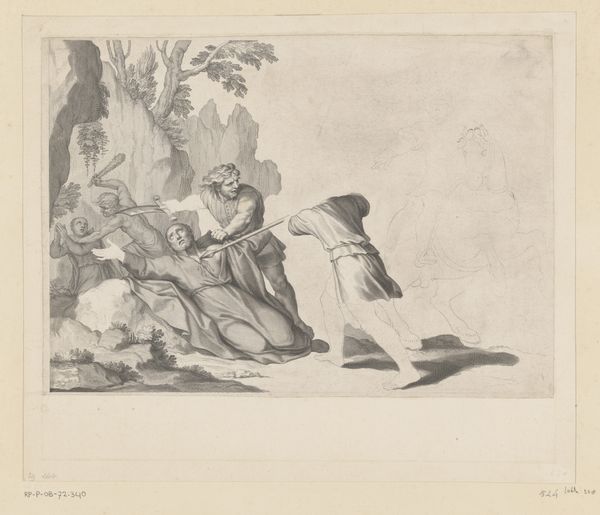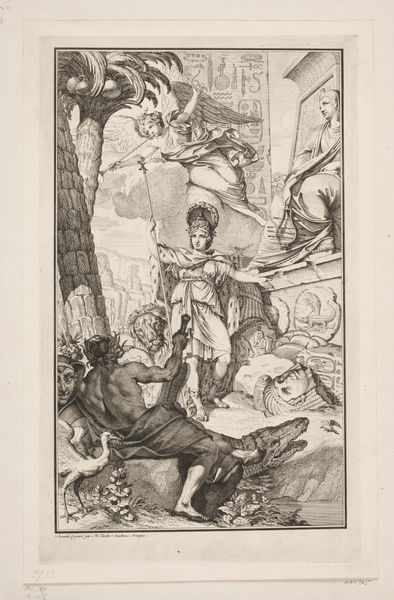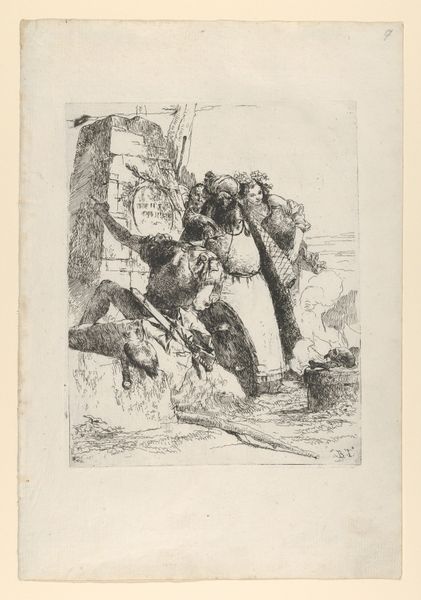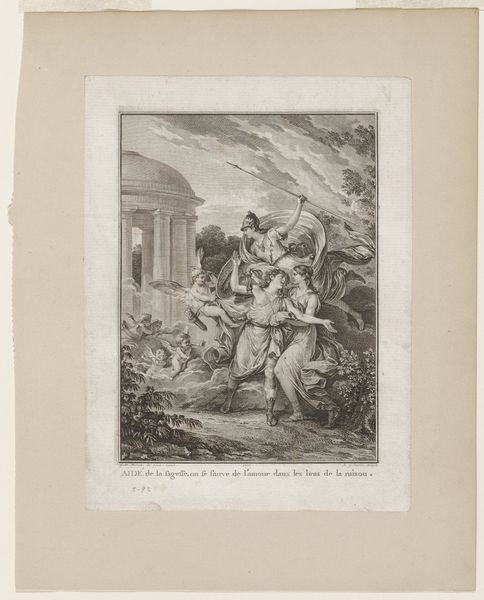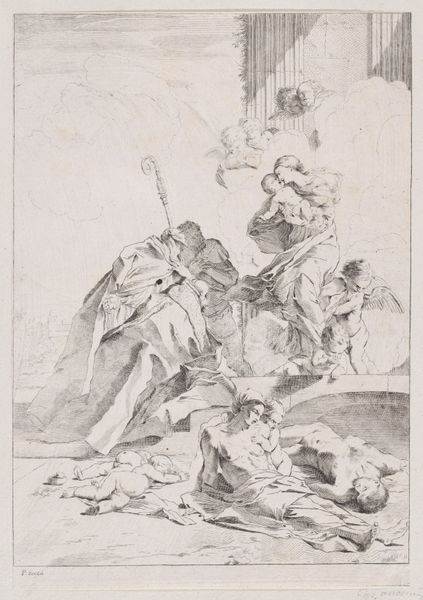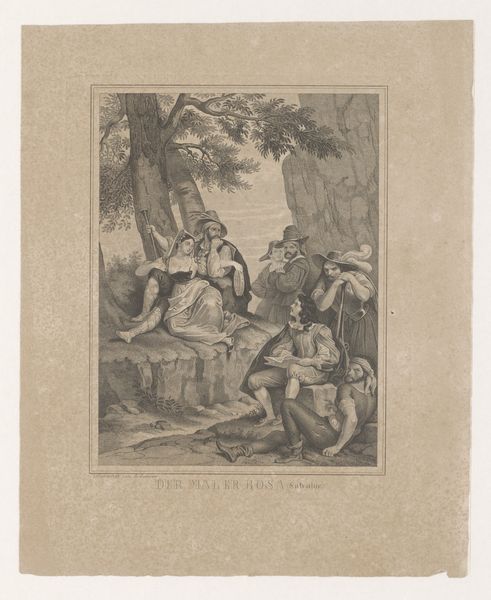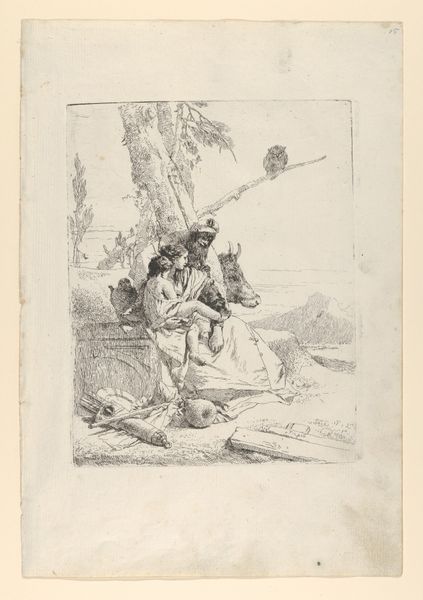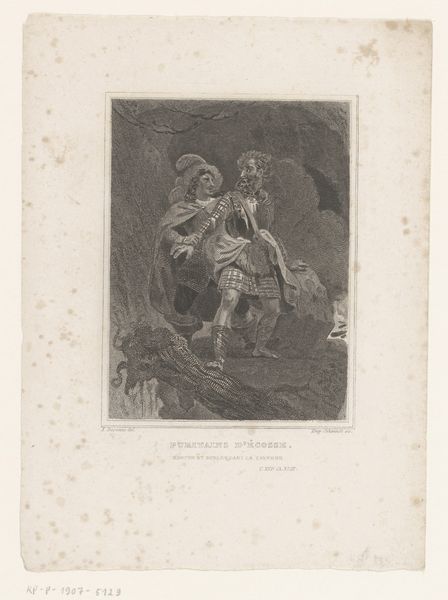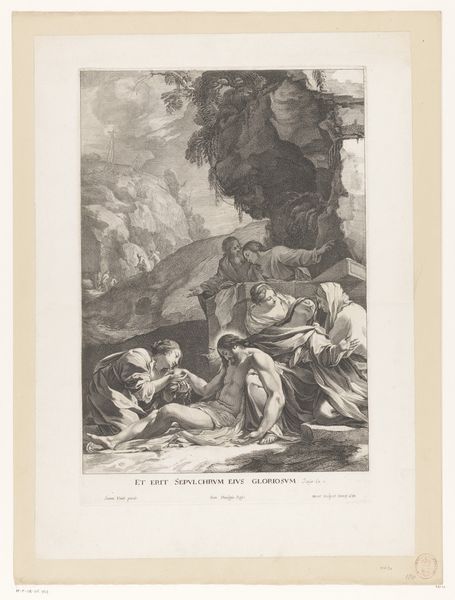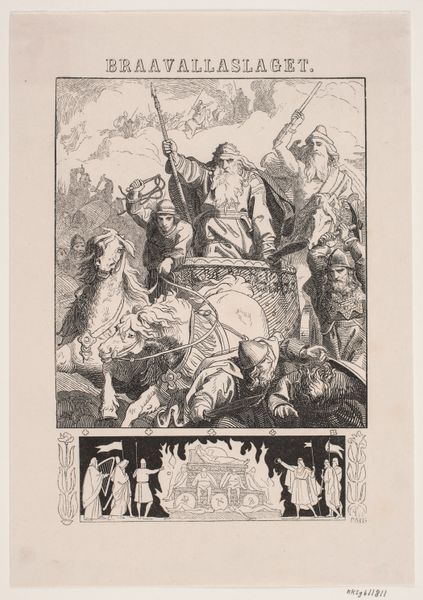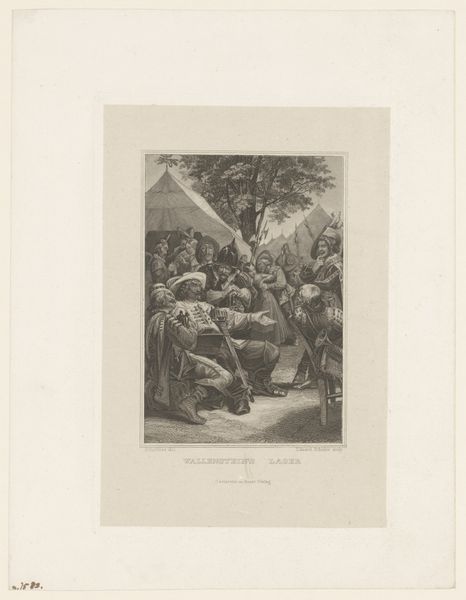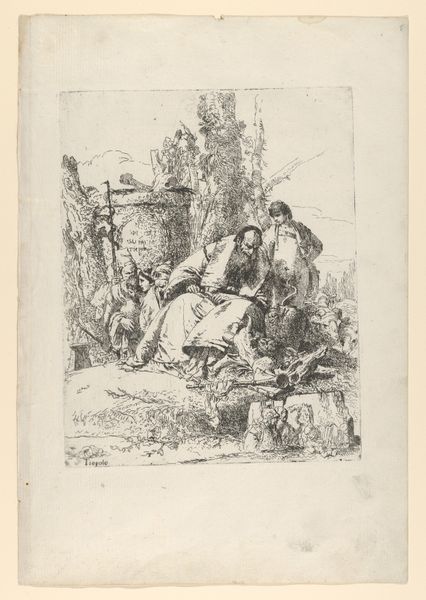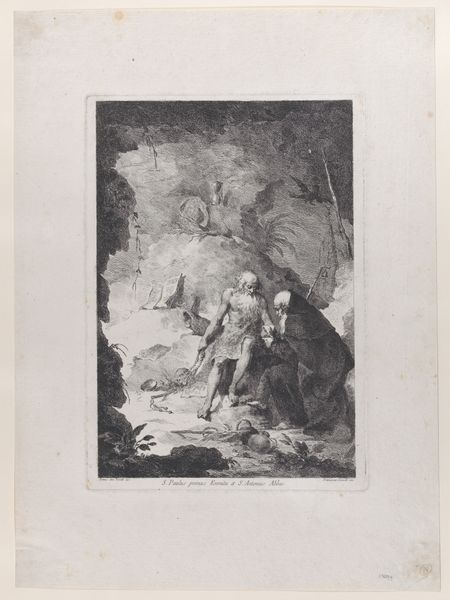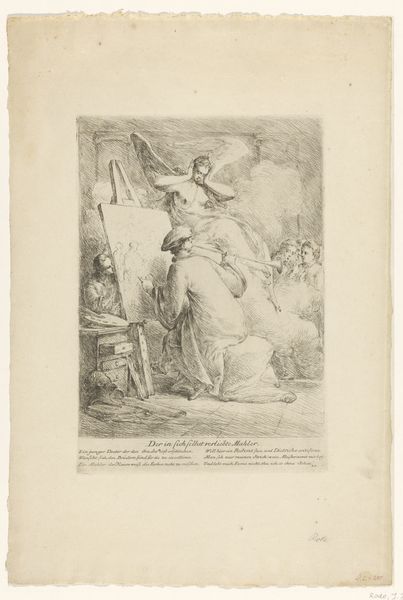
Copyright: Public Domain
Editor: Here we have Johann Heinrich Tischbein the Elder's "Coriolanus's Wrath," created in 1753 using ink, chalk, and graphite. It's a drawing depicting a dramatic, historical scene. The classical garb and theatrical gestures give it a distinctly performative air, almost like a stage play. What story does this drawing tell, and how might its historical context shape our understanding of it? Curator: The key to this piece, as you noted, lies in understanding the staging. Tischbein has consciously adopted a theatrical presentation here, pulling directly from the evolving public sphere of the mid-18th century. History paintings, particularly those drawing from classical narratives like Coriolanus, were less about simple illustration and more about prompting moral and political debate among viewers. What emotions are stirred in you by observing the figure of Coriolanus and the pleading woman? Editor: I see defiance in Coriolanus' posture but also, maybe, a hint of internal conflict. The woman seems to represent vulnerability and persuasive power through emotion. The gathering of figures in the background suggests they are witnesses to this event. It begs the question: whose perspective is favored in this artwork and what type of viewer would appreciate the underlying political sentiment? Curator: Precisely. Think about the rising middle class in Europe at the time. Artists increasingly catered to this public, producing works meant for discussion in salons and coffeehouses. "Coriolanus's Wrath," then, is less a straightforward historical account and more a calculated effort to engage contemporary debates about leadership, civic duty, and the role of women. Editor: So, this image uses a historical subject to spark conversations relevant to its contemporary audience, commenting on the socio-political atmosphere. Are there specific cues that direct the viewer to feel aligned with or challenged by this presentation? Curator: Absolutely. The classical aesthetic lent gravitas and universal appeal. However, the injection of romantic drama complicates a simple, heroic reading. Coriolanus isn't merely a strong leader; he's caught in a tension between duty and compassion. These nuances open the work to multiple interpretations and, subsequently, robust debate, particularly about the leader’s choices, intended for the increasingly influential public voice. Editor: I now see the artwork not just as a historical depiction, but as a cultural artifact designed to participate in the socio-political discourse of its time, aiming to reach a particular emerging audience. Curator: Exactly. Analyzing it through that lens truly unlocks its significance, showing that it comments on the very public sphere it aims to inhabit.
Comments
No comments
Be the first to comment and join the conversation on the ultimate creative platform.
